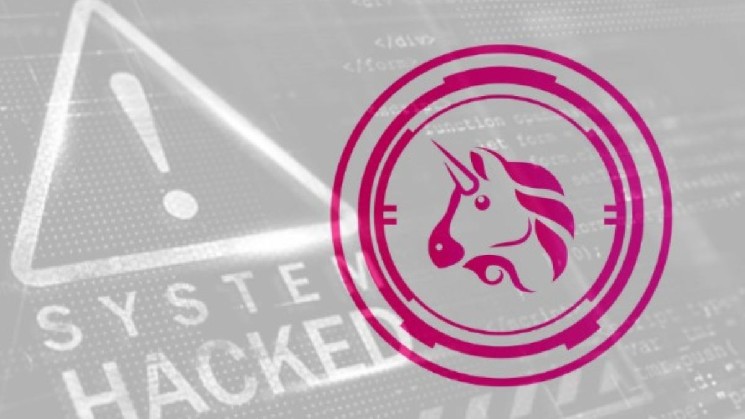Do Not Pass Go? Greenlit Uniswap Mobile App Caught Between Worlds

A greenlight on Apple’s App Store – the stamp of approval for trustworthy mobile apps – implies mainstream acceptance and utility on a scale few platforms can provide. Crypto apps in particular have found App Store status to be especially elusive due to the platform’s protective stance and stringent expectations.
It’s been a few days since Apple greenlit Uniswap’s mobile app — a long-sought boon to accessibility and visibility that will likely result in an in-flow of users, both new and experienced.
Co-hosts Mike Ippolito and Jason Yanowitz, Michael Anderson and Myles O’Neil at the Bell Curve podcast decided to dig into the mobile experience and discuss their first impressions.
O’Neil was the guinea pig for the experiment, testing out the app for himself.
“As far as I can tell,” he says, “they did put out what they advertised.”
He is quick to note that the mobile app doesn’t provide a noticeably better experience than existing wallets for sophisticated crypto-native users. “But it also doesn’t necessarily simplify the experience enough for brand new crypto users.”
O’Neil feels that the app is aimed squarely at a new audience, despite the mixed experience and complexities of self-custody and decentralization.
“This is going after retail.”
He suggests the app seems to be designed for “mainstream retail that might have been using a Coinbase or an FTX in the last cycle.”
On the plus side, O’Neil says, “wallet creation is very easy.”
“The fiat on-ramp process,” he says, “is pretty straightforward and simple.”
Pain points
But a few pain points stand in the way, he says.
“When you’re onboarding from MoonPay, it gives you all these different networks.” The wallet supports mainnet Ethereum in addition to layer-2 networks Arbitrum, Optimism, and Polygon, so “each token has four different versions,” he says.
Imagining himself as a new user, O’Neil wonders, “Is there something I should know about if I onboard to Optimism?” This choice is likely to cause confusion, he says. Certain tokens are only available on certain networks, adding to the complications.
O’Neil tested out the trading experience, hunting down Lido as his first acquisition. “Fortunately, Lido was in the Optimism asset list, but I noticed that the Optimism asset list is a lot smaller than the Ethereum asset list.”
“A brand new crypto user might not know why, right?”
Any experienced trader would know that ETH is required to pay gas fees, but this might not be obvious to someone trying to trade tokens for the first time, O’Neil explains. “I’d be like, ‘What does that mean? That’s annoying.’”
“Now it’s telling me that I don’t have enough ETH in my wallet to pay for the transaction fees.”
“I’m stuck going back to square one with the fiat on-ramp,” he laments, having to purchase ETH from fiat to have gas to spend on transactions.
“That part wasn’t clear to me.”
“Going back to square one; if I was a new user, I would’ve probably churned right there. I don’t want to go through that again.”
Abstract away the networks
O’Neil suggests abstracting away all the networks and different types of assets, with just “one version of every asset that shows up,” removing any “differentiation about networks.”
The app could instead run through an aggregator similar to services offered by platforms like 1inch and Paraswap. Using such a tool, the app could quietly look at all the Uniswap markets and find the most efficient path to a desired trade, hiding the messy bits from the experience.
“And whether that’s Lido sitting on Optimism or Lido sitting on Arbitrum or L1, I don’t really care. I have exposure to Lido now. I got what I wanted.”
Problems, however, could crop up with over-simplification. Such an abstraction of networks could potentially allow a user to accidentally send their tokens to the wrong chain in the future, causing a loss of funds. Unexpected fees could be incurred if multiple transactions across chains are concealed.
No man’s land
Despite the complexities and nuances of the self-custodied service and its applications, O’Neil focuses on the themes of ease-of-use and mainstream acceptance.
The mobile app currently exists in a “no man’s land,” O’Neil says, “where it’s not necessarily catering to the sophisticated crypto-native users,” but “it needs a couple more improvements to really compete with a centralized exchange app for newbies.”
Yanowitz questions O’Neil’s assumption that the app is designed with crypto rookies in mind. “A new user to crypto who owns no bitcoin and no ETH — I don’t think they’re going direct to Uniswap.”
Due to its decentralized nature, Uniswap requires a more advanced user than simpler centralized apps, such as Coinbase, in order to be used safely. Yanowitz asserts that the app primarily offers a crypto-native mobile experience for more experienced traders.
“That’s fair,” but “the main objective,” O’Neil reasons, “is to capture retail flow with this app” so it should look more like mainstream products, like the Robinhood trading app, for example.
When compared to the centralized exchange demographic, the existing DEX user base is “a relatively small bubble” O’Neil counters.
Tapping into the centralized exchange user base provides a significantly larger audience, he says. “That’s at least a hundred million people right there.”
“Maybe this is their onboarding experience.”






 Bitcoin
Bitcoin  Ethereum
Ethereum  Tether
Tether  USDC
USDC  TRON
TRON  Dogecoin
Dogecoin  Cardano
Cardano  Bitcoin Cash
Bitcoin Cash  Chainlink
Chainlink  Zcash
Zcash  Monero
Monero  LEO Token
LEO Token  Stellar
Stellar  Litecoin
Litecoin  Hedera
Hedera  Dai
Dai  Cronos
Cronos  Tether Gold
Tether Gold  OKB
OKB  Ethereum Classic
Ethereum Classic  KuCoin
KuCoin  Gate
Gate  Algorand
Algorand  Cosmos Hub
Cosmos Hub  VeChain
VeChain  Dash
Dash  Tezos
Tezos  TrueUSD
TrueUSD  Stacks
Stacks  IOTA
IOTA  Decred
Decred  Basic Attention
Basic Attention  Theta Network
Theta Network  NEO
NEO  Synthetix
Synthetix  Qtum
Qtum  0x Protocol
0x Protocol  Ravencoin
Ravencoin  DigiByte
DigiByte  Zilliqa
Zilliqa  Nano
Nano  Holo
Holo  Siacoin
Siacoin  Numeraire
Numeraire  Ontology
Ontology  Waves
Waves  Status
Status  BUSD
BUSD  Enjin Coin
Enjin Coin  Pax Dollar
Pax Dollar  Hive
Hive  Lisk
Lisk  Steem
Steem  Huobi
Huobi  OMG Network
OMG Network  NEM
NEM  Bitcoin Gold
Bitcoin Gold  Augur
Augur  Ren
Ren